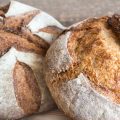Sourdough’s tangy, complex flavor is loved by many, but achieving that perfect rise takes finesse. With so many options for creating a starter, it’s hard to know where to begin. This article will explore the main types of sourdough starters, from tried and true classics to innovative new methods. You’ll learn the origins, ingredients, and processes that distinguish starters like the stiff levain from liquid culture. Get ready to discover the tips and tricks to create a hearty, bubbly loaf perfect for slicing or sandwiches. We’ll help you determine the ideal sourdough starter type for your needs.
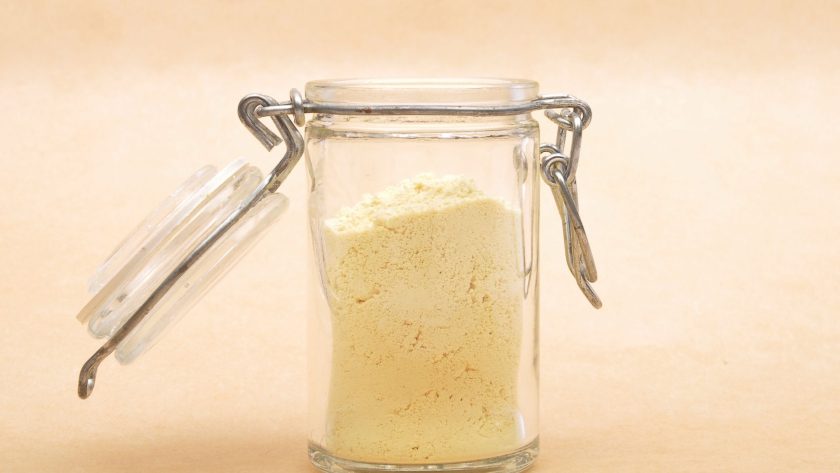
Table of Contents
- Types of Flour Used in Starters
- Types of Yeast in Sourdough Starters
- Regular Sourdough Starter: Characteristics and Uses
- Stiff Sourdough Starter: Composition and Benefits
- Liquid Sourdough Starter: Creating and Maintaining
- Gluten-Free Sourdough Starters
- Many Starters to Start Your Sourdough Adventure!
- Types of Sourdough Starter: FAQs
Types of Flour Used in Starters
When creating a sourdough starter, the type of flour used can have a big impact on the starter’s rise, flavor, and overall performance. Choosing the right flour is an important first step in developing a healthy, active starter that will lead to wonderfully airy loaves. Let’s explore some of the most common options for sourdough starter flours.
Wheat Flour
Most sourdough starters are made with regular wheat flour, which contains enough protein to develop gluten. Gluten provides the structure and rise in sourdough bread. All-purpose flour and bread flour are two common wheat flours used for starters.
All-purpose flour, with its moderate protein content of 10-12%, is a versatile choice that creates a mildly acidic, well-rounded flavor. Bread flour has a higher protein content at 12-14%, yielding a more robust starter that can produce a chewier crumb and a dramatic oven spring. While all-purpose flour makes a very serviceable starter, many artisan bakers swear by bread flour to give their loaves an extra lift.
When choosing a wheat flour, ensure it hasn’t been over-processed. Bleached, bromated flours won’t cultivate the wild yeasts and bacteria essential for a lively starter. Opt for unbleached, unbromated flours milled from hard red or hard white wheat.
- Whole grain, good source of fiber and protein, creates darker colored baked goods .Six 22 oz. bags of Stone Ground Whole Wheat Flour
- USDA-Certified Organic and Non-GMO Project Verified .35 grams of whole grains per serving. Good source of fiber certified kosher
- Whole wheat flour lends a slightly nutty, earthy flavor to baked goods. Since whole wheat flour contains the whole nutrient-dense bran and germ,
- it benefits from adding about 1 tablespoon of liquid per cup of flour when making substitutions for all-purpose flour. Its best when used in yeasted breads, rolls and pizza.
- This versatile flour is the perfect complement to your favorite recipes and can be used to make a variety of cakes, cookies and bre
Prices pulled from the Amazon Product Advertising API on:
Product prices and availability are accurate as of the date/time indicated and are subject to change. Any price and availability information displayed on [relevant Amazon Site(s), as applicable] at the time of purchase will apply to the purchase of this product.
Rye Flour
For a more complex, tangy flavor profile, rye flour can be used alone or combined with wheat flour. Rye contains less gluten-forming protein than wheat, but makes up for it with extra enzymes that break down starches into sugars, fueling fermentation. The result is a starter with a pleasant sourness.
Rye flour requires more frequent feedings to maintain an active starter. Pairing rye with wheat creates a more stable culture. A 60% wheat, 40% rye starter capitalizes on rye’s signature taste while benefiting from wheat’s structure. The percentage of rye can be adjusted to suit your preference.
- STONE GROUND DARK RYE FLOUR made from 100% whole grain rye berries. All of the grain components, together with all of its great nutrition, are kept and retained in the stone milling processes.
- Dark rye flour is all natural and WHOLE GRAIN. It is a SINGLE INGREDIENT, kosher and non-GMO flour. Milled to perfection, bringing you a HEALTHY, great tasting and nutritious flour.
- Dark rye flour is a whole grain flour and is packed with all the GOOD NUTRITION of whole grain foods. Dark rye flour has lots of good DIETARY FIBER and has less gluten then ordinary wheat flour.
- Rye flour is the TRADITIONAL BREAD of Europe. Rye flour is used to make artisan breads, PUMPERNICKEL bread, delicious sourdoughs and other traditional, old style breads of northern and eastern Europe
- Dark rye flour can be used alone to make more traditional and dense breads, or mixed together with all-purpose wheat flour. Dark rye flour makes a lovely RYE LOAF with the DISTINCT earthy rye FLA
Prices pulled from the Amazon Product Advertising API on:
Product prices and availability are accurate as of the date/time indicated and are subject to change. Any price and availability information displayed on [relevant Amazon Site(s), as applicable] at the time of purchase will apply to the purchase of this product.
Whole Wheat Flour
Some bakers shun refined white flours in favor of nutrient-dense whole wheat. Whole wheat starters produce loaves with a nutty, earthy depth. The bran adds a distinctive texture. The germ provides fats that enhance flavor through softer fermentation byproducts.
Because the coarse bran can inhibit Gluten development, whole wheat starters benefit from the addition of some bread flour. Try a 50/50 whole wheat-to-bread flour ratio. The bread flour gives the gluten strength, while the whole wheat lends its rustic essence.
- Bob’s Red Mill is the nation’s leader in stone milling and offers the widest diversity of whole grains found anywhere.
- USDA guidelines recommend eating at least 3 servings of whole grains every day.
- Orga
Prices pulled from the Amazon Product Advertising API on:
Product prices and availability are accurate as of the date/time indicated and are subject to change. Any price and availability information displayed on [relevant Amazon Site(s), as applicable] at the time of purchase will apply to the purchase of this product.
Other Flour Options
For a flavored twist, starters can include small amounts of other specialty flours like rye, spelt, kamut, einkorn, buckwheat, sorghum or teff. Up to 20% of these nutritious ancient grains can be substituted for wheat or rye flour. Just ensure most of the starter consists of gluten-containing flour to allow adequate rising.
Some alternative flours, like coconut and almond flour, lack the proteins necessary for starter cultivation and bread structure. But adding about 10% of these flours can impart a subtle richness.
With all of these flour possibilities, starter recipes can be endlessly tweaked to create a custom culture that reflects your tastes and baking style. Experiment to find your ideal blend. The key is choosing flours that balance flavor, nutrition and the gluten needed to take your sourdough to soaring new heights.
Types of Yeast in Sourdough Starters
One of the keys to a successful sourdough starter is using the right types of yeast. Sourdough relies on wild yeasts as opposed to commercial baker’s yeast to leaven the bread. Understanding the differences helps create a starter teeming with active cultures.
Wild Yeast vs Commercial Yeast
Unlike mass-produced commercial yeast, wild yeast naturally occurs everywhere. The wild yeast spores floating around us create the bubbles and rise in sourdough. Capturing local wild yeasts gives sourdough its distinctive terroir and flavor nuances based on environment.
Commercial yeast provides consistent results but lacks the depth of flavor from wild cultures. Sourdough’s long proofing times allow wild yeasts and bacteria to produce lactic and acetic acids for complexity. Using only commercial yeast leads to a one-note bread missing sourdough’s signature tang.
- Safe Instant Yeast is one of the top selling yeasts in the world
- Comes in a large, 16-ounce (1 Pound) vacuum-packed bag
- Store in an airtight container; for 6 months at room temperature or in the fridge; or for a year or longer in your freezer
- Fast acting and long lasting
- Saf Instant Yeast is one of the top selling yeasts in the world
- Comes in a large, 16-ounce (1 Pound) vacuum-packed bag
- Store in an airtight container; for 6 months at room temperature or in the fridge; or for a year or longer in your freezer
- Fast acting and long lasting
- Saf Instant Yeast is one of the top selling yeasts in the world
- Comes in a large, 16-ounce (1 Pound) vacuum-packed bag
- Store in an airtight container; for 6 months at room temperature or in the fridge; or for a year or longer in your freezer
- Fast acting and long last
Prices pulled from the Amazon Product Advertising API on:
Product prices and availability are accurate as of the date/time indicated and are subject to change. Any price and availability information displayed on [relevant Amazon Site(s), as applicable] at the time of purchase will apply to the purchase of this product.
Yeast’s Role in Fermentation
Yeast converts sugars into carbon dioxide and alcohol through the fermentation process. The CO2 gas gets trapped in the gluten matrix, causing the dough to expand. This creates the air pockets and irregular holes that characterize artisanal loaves.
Sourdough yeasts work slower than commercial yeast. But given time, wild yeast generates enough CO2 for good rise. Using a blend of rye and wheat flours provides food for the critters during long fermentation.
Diverse Yeast Strains
Hundreds of yeast species inhabit sourdough starters. Saccharomyces exiguus is the primary yeast responsible for leavening, but other yeasts contribute. Candida milleri adds acidity while Saccharomyces cerevisiae brings alcohol flavors.
Different yeast strains impact a starter’s vigor, acidity and how fast it ferments. Higher yeast diversity creates a starter resistant to temperature changes. The mix of yeasts brings metabolic flexibility to adapt to conditions.
In summary, sourdough’s wild yeasts bring an intricate balance of flavors and “lift” to bread. Harnessing this microbial medley takes patience but rewards bakers with loaves brimming with richness.
Regular Sourdough Starter: Characteristics and Uses
When people think of sourdough, they usually envision a standard, traditional starter made simply from flour and water. This basic starter has been used for centuries to leaven breads and lend that distinctive tang. Let’s explore what sets regular sourdough starter apart.
Simple Ingredients
A classic sourdough contains just two ingredients: flour and water. Tradition calls for using only flour and water to cultivate the wild yeasts and bacteria responsible for sourdough’s rise and flavor. Avoid adding sweeteners or other ingredients that would disrupt fermentation.
The flour provides food for microbes. A 50/50 blend of whole wheat and rye flours gives the critters a balanced diet. The water hydrates the flour while enabling the yeasts and bacteria to thrive in an aqueous environment.
Slower Fermentation
Without added commercial yeast, regular starters rely solely on naturally occurring yeasts and lactic acid bacteria. This leads to a long, slow fermentation time of 24-48 hours at room temperature, allowing complex flavors to develop.
The extended ferment creates more organic acids like lactic and acetic acid. This gives regular sourdough its signature tangy taste and helps preserve the bread.
Versatile Bread Applications
Regular sourdough starter can raise any type of bread, from country loaves to baguettes. It pairs especially well with heartier whole grain breads, producing a wholesome flavor and lighter texture. The starter helps break down the bran and phytates in whole wheat flour, increasing nutrient bioavailability.
For the most traditional taste, regular starter is ideal for recipes like San Francisco sourdough with its crusty boule shape. The starter contributes a pleasing sourness that balances the sweetness of an enriched dough like challah.
Stiff Sourdough Starter: Composition and Benefits
A stiff sourdough starter contains a higher ratio of flour to water compared to a regular, loose starter. This thicker consistency makes the starter easier to handle and can create tasty artisan loaves with a chewy crumb.
What goes into a stiff starter and how does it affect finished breads?
Achieving a Stiff Consistency
To create a firm, stiff starter, use equal parts flour and water by weight or increase the flour to 60-70% of the water weight. For example, 100g flour mixed with 100g water makes a thick, scoopable starter. The higher flour content slows fermentation while still allowing the yeasts and bacteria to thrive.
Some bakers boost the flour content even higher to create a dry starter with a dough-like texture. This very firm starter requires kneading to incorporate the water. The denser consistency makes it easier to handle for mixing and shaping.
Impacts on Fermentation
The reduced hydration level in a stiff starter means less available water for the yeast and bacteria. This slows fermentation, requiring a little more patience. Avoid going above 80% flour by weight or fermentation could stall.
Check for bubbles and rise to ensure the stiff starter remains active. The thicker consistency retains more gas for a vigorous rise. Let it peak before mixing the final dough.
Resulting Bread Texture
When incorporated into a bread recipe, a stiff starter adds heft and texture. The firmer starter creates resistance that strengthens gluten development. This produces an airy yet chewy interior with big irregular holes.
The denser crumb provides excellent support for whole grains. Stiff starter is ideal for hearty rye and whole wheat breads. It adds a pleasantly wheaty flavor while ensuring the loaves don’t turn out overly dense.
For chewy baguettes or ciabatta with big holes, a stiff starter is just the ticket. It contributes extensibility to the dough for good oven spring. The starter’s yeasty aroma also enhances flavor.
With some experimenting to get the consistency right, bakers can utilize stiff starters to create loaves with the artisanal quality they crave. The thicker starter both streamlines handling and brings out the best in finished breads.
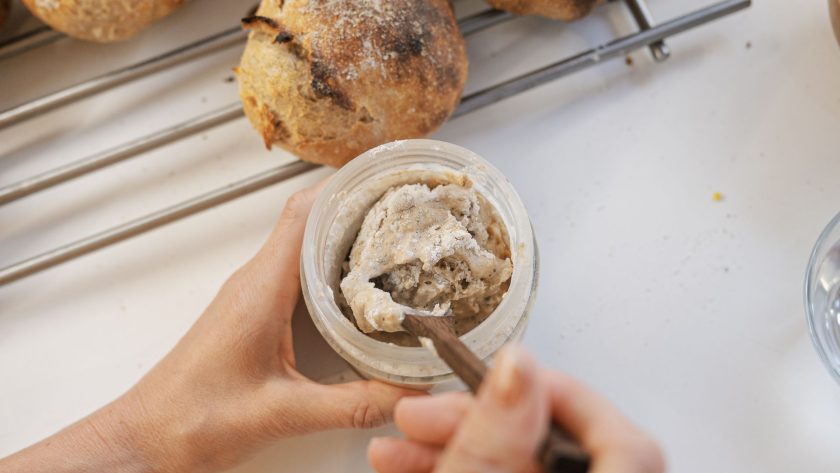
Liquid Sourdough Starter: Creating and Maintaining
Liquid sourdough starters (not to be confused with liquid on top of sourdough starter) have a higher water content than traditional firm starters, resulting in a thinner, more fluid consistency. Let’s explore how to create and care for these wet starters.
Achieving a Liquid Consistency
Liquid starters typically contain equal parts flour and water by weight, or even an extra 50% water over the flour amount. For example, 100g flour mixed with 150g water makes a thin, pourable starter. The higher hydration provides ample moisture for yeasts and bacteria to thrive.
Some bakers boost the water content up to 200% of the flour weight. This ultra-liquid starter resembles a thick batter. The extremely wet consistency allows for rapid fermentation. But too much liquid can weaken gluten development.
Feeding and Maintaining a Liquid Starter
The runnier texture requires more frequent feedings. Feed a liquid starter at least once a day, or even twice daily if kept at hotter temperatures. Use equal weights of flour and water when refreshing to retain the fluid state.
Stir the starter well before feeding to incorporate any separated liquid. Watch for bubbles and a rise in volume to ensure the active cultures remain vigorous. Discard some starter before feeding to prevent excessive acidity.
Maintain the starter around 70°F/21°C. Warmer temperatures accelerate fermentation, while cooler conditions could stall a thin starter. Consider a heating pad or Proofing Box during colder months.
Using Liquid Starter for Bread
When mixed into dough, a liquid starter contributes moisture for a soft, spongy crumb. Reduce the hydration of the final dough slightly to account for the wet starter. The rapid ferment from the liquid starter also boosts oven spring.
For ciabatta and focaccia, a splash of liquid starter brings lightness. Lean doughs like baguettes benefit from the starter’s extensibility and fermentation power without making the crumb too dense. Adjust recipes and kneading time when substituting liquid for dry starter.
With some trial and error to balance hydration, liquid starters can create loaves with a delicate, mellow flavor and cottony texture. Their fluid nature does require diligent maintenance but imparts sourdough’s essence in a gentle yet assertive manner.
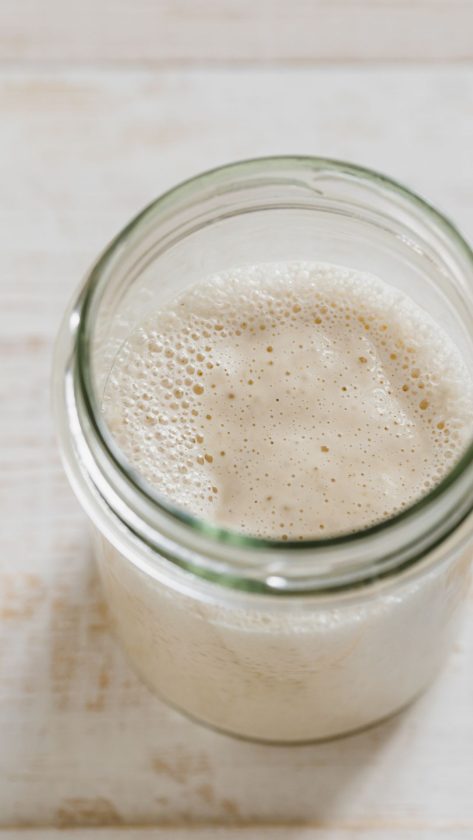
Gluten-Free Sourdough Starters
For those avoiding gluten, the complex world of sourdough starters may seem off limits. But with the right flours, you can cultivate gluten-free sourdough full of live cultures and rise. While it requires some adjustments, homemade gluten-free sourdough brings the spirit of true artisan bread to any restricted diet.
I actually dive into the topic more in my blog “Is Sourdough Bread Gluten Free” but we’ll also answer the topic here!
Gluten-Free Flour Options
You can’t use regular wheat flour for gluten-free sourdough since it contains gluten. But other naturally gluten-free flours offer solutions. Rice flour and buckwheat flour make excellent alternatives. Brown rice flour in particular contains starch molecules that can mimic gluten’s elasticity. Buckwheat packs protein for structure and boasts a nutty, earthy taste.
A blend of flours often works best. Try mixing brown rice flour with sorghum or millet flour for a versatile starter. Teff flour adds texture and a rich flavor. Garbanzo bean flour provides binding power. Start with a 1:1 ratio of brown rice to buckwheat flours for a balanced starter. Adjust the percentages over time to find your perfect mix.
Maintaining the Starter
Without gluten, gluten-free starters are more delicate and less stable. Feed a gluten-free starter daily, or even twice a day in warm weather. Use equal weights of flour and water. Watch for bubbles and rise to ensure the yeasts stay active.
Store the starter in the fridge between uses for slower fermentation. Let it come to room temp before baking. The starter may require a bit more babying, but with care you’ll be rewarded with lovely loaves.
Gluten-Free Sourdough Success
Creating tasty gluten-free sourdough takes diligence, but it opens up homemade bread to so many. With the multitude of gluten-free flours now available, you can craft starters to suit your tastebuds. It may require a few more feedings and closer observation, but vibrant gluten-free sourdough is eminently achievable. Don’t be afraid to experiment until you perfect your own signature blend.
Many Starters to Start Your Sourdough Adventure!
Sourdough starters are incredibly versatile. Choose one and you can create various breads using various types of flour and yeast.
Remember that stiff starters produce chewier loaves while liquid starters yield a softer crumb. Feeding schedules and maintenance also vary based on the starter type.
With so many options, you can craft custom starters aligned to your baking goals, whether an earthy whole wheat loaf or a mild but tangy white sourdough. The key is understanding how different flours, yeasts, and hydration levels interact. Adjustments to these elements result in starters with distinctive characteristics.
Making a basic starter or experimenting with new ingredients, the potential for signature sourdough is limitless.
Types of Sourdough Starter: FAQs
What is the healthiest sourdough starter?
The healthiest sourdough starter is one that is made with whole grain or rye flour and uses filtered or bottled water rather than tap water. Allowing the starter to ferment in a warm environment (70-80°F) will produce a starter with a robust microbial community that yields better flavor and rise in baked goods. Regularly discarding and feeding the starter keeps it active.
What is the difference between a stiff starter and a sweet stiff starter?
A stiff starter contains only flour and water which ferments into a sour taste. A sweet stiff starter contains flour, water, and a small amount of sugar which the yeast ferments into lactic acid creating a mild, sweet flavor. The sugar food source allows a sweet starter to ferment more quickly than a regular stiff starter. Both can be used to leaven baked goods.
What is the difference between stiff and liquid starters?
A stiff starter has a thicker, dough-like consistency while a liquid starter has a batter-like consistency. Stiff starters typically contain equal parts flour and water by weight resulting in a firmer texture. Liquid starters have a higher proportion of water to flour creating a looser texture. Both contain active yeast and bacteria to leaven baked goods, but a liquid starter ferments faster while a stiff starter has a more sour flavor.
What is a poolish starter?
A poolish starter is a pre-ferment used in bread baking that consists of equal parts flour and water by weight along with a small amount of yeast. It differs from a traditional starter in that it uses commercial yeast rather than wild yeast. The poolish is mixed and allowed to ferment for several hours before being incorporated into the final dough. This two-stage process develops flavor and texture in the bread while still relying on commercial yeast for leavening. A poolish creates a milder flavor than a sourdough starter.





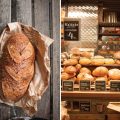
![[Video] From The Seed To The Peasant Bakery With Nicolas Supiot 9 [video] from the seed to the peasant bakery with nicolas supiot](https://www.mydailysourdoughbread.com/wp-content/uploads/2022/11/image-18-120x120.jpeg)
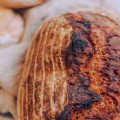
![Is Keto Sourdough Bread Low Carb - What You Need To Know [Plus Bonus Recipe] 11 Is keto sourdough bread low carb - what you need to know [plus bonus recipe]](https://www.mydailysourdoughbread.com/wp-content/uploads/2022/09/CD-blog-images-2022-09-28T221612.311-e1665964918416-120x120.jpg)
